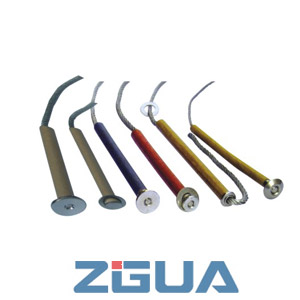Is there silver in the Fuse Link?
High-voltage fuses generally have no silver, and the contact parts between the two ends and the base are generally made of copper. Except for the fuse in the middle, the outside is an insulating tube. The low voltage is paper insulation, and the high voltage is porcelain or synthetic insulating material.
The moving and static contacts of the switch are a bit silver, not many.
The contacts of the contactor also have a little silver, and its main body is copper. Most of the silver is silver-plated, and it is a thin layer that is difficult to separate.

Characteristics of Fuse Link
1. Melt materials are divided into a low melting point and a high melting point. Low melting point materials such as lead and lead alloys have a low melting point and are easy to fuse. Due to their high resistivity, the cross-sectional size of the melt is large, and more metal vapor is generated during fusing. It is only suitable for fusing with low breaking capacity. device.
2. High melting point materials such as copper and silver have a high melting point and are not easy to fuse. However, due to their low resistivity, they can be made into smaller cross-sectional sizes than low melting point melts, and less metal vapor is produced during melting. It is suitable for Fuses with high breaking capacity. The shape of the melt is divided into two types: filament and ribbon. Changing the shape of the variable section can significantly change the fusing characteristics of the fuse.
3. Fuse Link has anti-delay characteristics, that is, when the overload current is small, the fusing time is long; when the overload current is large, the fusing time is short. Therefore, within a certain overload current range, when the current returns to normal, the fuse will not blow and can continue to be used. Fuses have various fusing characteristic curves, which can be applied to the needs of different types of protected objects.
4. Fuse Link is installed in the circuit to ensure the safe operation of the electrical components of the circuit. When a fault or abnormality occurs in a circuit, the current will continue to rise, and the rising current may damage some important or valuable components in the circuit, and may also burn the circuit or even cause a fire. If the fuse is correctly placed in the circuit, then the fuse will fuse itself to cut off the current when the current abnormally rises to a certain height and at a certain time, thereby protecting the safe operation of the circuit. The fuse cuts off the current, thereby protecting the safe operation of the circuit.
Pay attention to whether the fuse is in good condition and clean before installation. If it has been dropped or violently vibrated, check its resistance value and carefully check whether there are cracks on the surface of the porcelain tube.
When installing, pay attention to the direction of the striker marked on the fuse. After the correct installation, lock the steel clip (or fastening bolt) on the base to prevent too loose contact.
In a three-phase system, when only one fuse operates, the general fuses should be replaced, unless it can be proved that a common fuse passes the fault current, because although the other two fuses do not operate, there may be serious operation or failure. close to damaging.
Be very careful when replacing the fuse, because the current-limiting fuse has a reliable range of action during operation, but it cannot be guaranteed that every fault condition will increase within its reliable range, such as the tripping of the switchgear fails, or the fuse is below It operates under the minimum breaking current, etc. For the sake of safety, wait at least 10 minutes after the fuse is activated and the circuit is isolated by other electrical appliances before replacing it. Make sure that the fuse is replaced under the condition of no power.
In a general power system, if properly selected, fuses should rarely operate. If this is not the case, it is likely that the system selection is improper or the calculation selection is wrong, and there is a problem with the line connection, etc., which should be further checked and calculated.
For fuses in normal operation, when the equipment is regularly overhauled, it can be used to measure the change of the inside of the fuse to judge whether it is aging, and the change range of the internal resistance should be within ±10%.





